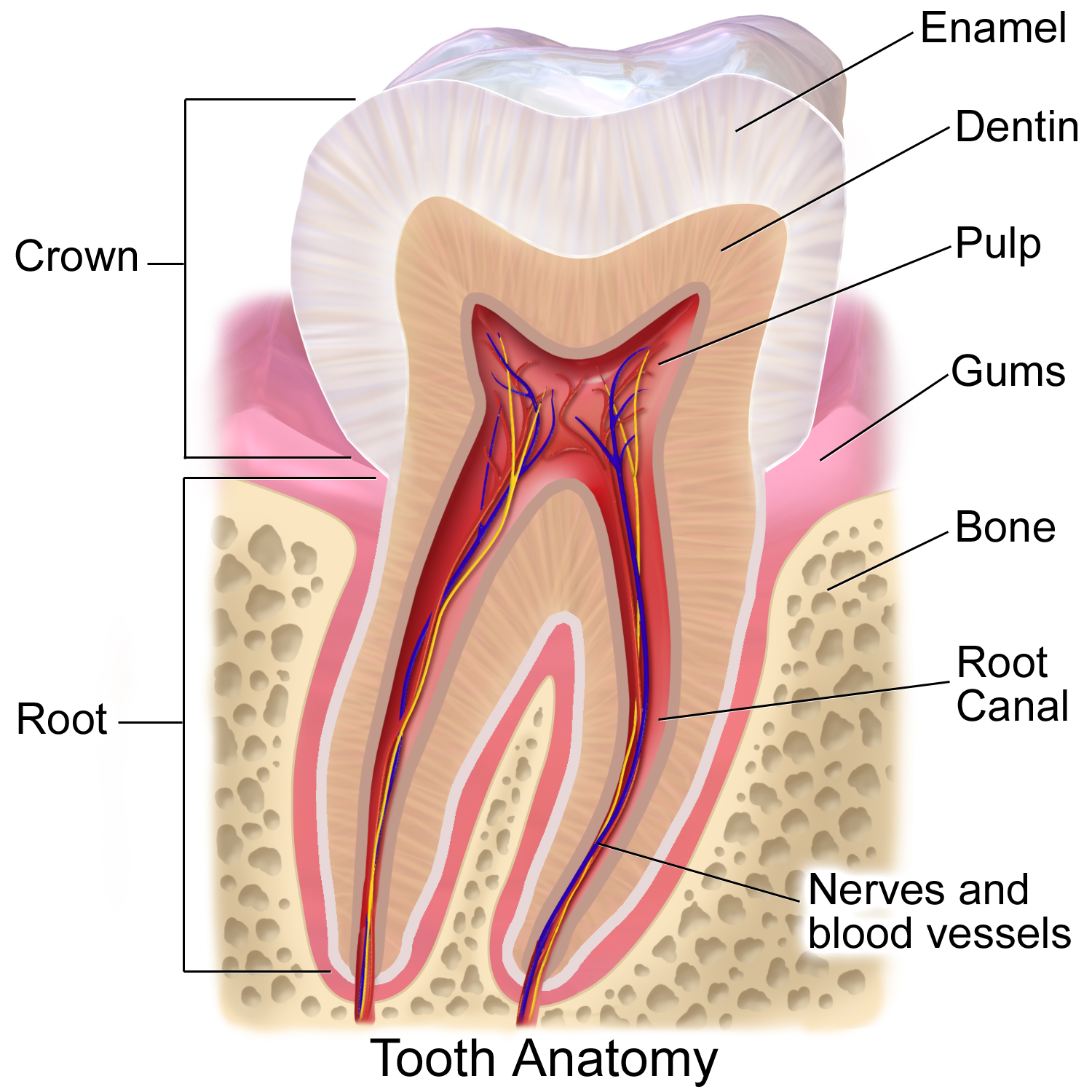The American Academy of Pediatric Dentistry and AAP recommend oral health examinations how often?
Bonus: By what age should a child have established care with a dentist?
1 year
When do children typically get their permanent teeth?
Around 6-8 years of age
What can allowing children to fall asleep with milk or juice in a bottle cause?
Early childhood caries
When should children start brushing their teeth?
As soon as they have tooth eruption, the should have their teeth brushed twice a day with a "grain of rice" size of fluoride toothpaste.
Is fever associated with teething?
Bonus points: what symptoms are associated with teething?
No; though mild temperature elevation can be noted, they are not a true fever (101.4F)
-increased biting, drooling, gum rubbing, sucking, irritability, wakefulness, ear rubbing, facial rash, decreased PO intake of solid foods
What are common bacterial species found in caries/mouth?
Streptococcus mutans and lactobacillus
-Acidophilic, facultative, anaerobic bacteria
When do teeth typically start erupting?
Bonus points: What teeth typically erupt first?
Around 6-10 months is the most common, but full range of age is 3 months to 15 months
-Fun fact 1 in every 2000-3000 babies are born with natal teeth; typically have to be removed since they are wobbly and pose an aspirational risk
-Typically the lower central incisors are the first to erupt followed by the upper central incisors.
What teeth are characteristically affected by early childhood caries?
The anterior incisors and the posterior teeth, but spare the lower front teeth as they are protected by the lips and gums.

What are reasons that a patient should be referred to a dentist?
-Children with developmental disabilities
-Children whose mother or siblings have high caries rates
-Children with demonstratable caries, plaque, demineralization, and/or staining
-Children who sleep with a bottle or breastfeed throughout the night
-Children in families with social drivers of adverse dental care (food insecurity, lack of access, uninsured)
What recommendations should you give to patient's for treating teething pain?
Recommend cold items, gentle gum massage, Tylenol only if severe
-Topical anesthetics should NOT be recommended due to parents tending to use too much (numb the mouth and increase aspiration risk), associated with methemoglobinemia. Oral viscous lidocaine solution is not approved and cause serious complications. Over the counter "natural" products have not been shown to reduce pain.
Does breast milk contribute to formation of caries?
Yes, but only moderately, as it does not lower the pH as much as other substances (less time for bacteria to flourish) and has added benefit of enhancing mineral deposition in enamel.
Does the parent's dental health play any hereditary component to increased risk of caries?
Yes; there is a direct correlation between maternal dental history and the child.
-Studies have shown that 70% of mothers and their child share identical strains of Streptococcus mutans.
What are some of the complications of cavities?
Oral pain, poor nutrition, disfigurement.
Complication of other medical diagnosis
What are some of the risks of having too much fluoride?
Bonus: what age of children are most susceptible to fluorosis?
Too much fluoride can cause fluorosis which is discolorations on the teeth, severe cases can cause pitting of the teeth and brittle enamel.
Children under age 8; this is a critical period of enamel formation
What are the benefits of fluoride?
Significantly reduced number of caries.
Fluoride inhibits the demineralization of enamel and enhancing dental remineralization. Fluoride in dental plaque is released to low pH after the ingestion of foods, and is then taken up by de-mineralized areas of enamel with calcium and phosphate to form a stronger enamel crystal structure. It also inhibits bacterial production of acids and polysaccharides.
How long does it take after consumption of simple sugars for the pH in the mouth to return to normal?
90 minutes
With dental trauma what should be done with permanent teeth?
They should be re-implanted as soon as possible. The outcome of re-implantation is directly related to the time the tooth is out of the oral cavity.
97% success rate if re-implanted within 5 minutes, 0% success rate if re-implanted at 1 hour
1. Topical agents: tobacco, coffee/tea, lead, iron, topical medications, emesis, chlorhexidine rinse, betel nut
2. Poor oral hygiene/dental plaque
3. Teeth grinding (Bruxism)
What are some factors that contribute to increased risk of dental decay?
-Poor diet
-Poor oral hygiene
-Buffering capacity of saliva
-Variations in dental anatomy
-Premature infants
-Low birthweight
-Developmental disabilities
How often should children get fluoride varnish?
Per AAP recommendations every 3-6 months following first tooth eruption until dental care is taken over by a dentist.
Children at high risk should receive an application of fluoride varnish at least every 6 months
What are the three factors that contribute to formation of dental caries?
-Time
-Substrate
-Bacterial presence and virulence
Bonus points: What do you do with the tooth is immediate reimplantation is not possible?
No, that is not recommended.
The avulsed tooth be replaced in its socket after gentle removal of any debris.
-Place in cold milk, saliva, physiologic saline solution, Viaspan, or Hank's Balanced Salt Solution if available
Name 3 intrinsic causes of tooth discoloration?
1. Mild trauma to teeth during enamel formation
2. Infection during enamel formation
3. Nutritional deficiencies
4. Hyperbilirubinemia
5. Normal aging
6. Dental restoration amalgams
7. Hereditary disease: amelogenesis imperfecta, dentogenesis imperfecta, dentinal dysplasia
With primary dental trauma should you remove the tooth if the trauma involves the apical one third of the tooth?

No, if the crown is stable you can leave in the tooth.
If the coronal one-third is fractured or the root is fractured you should remove the tooth as is will be unstable and at risk for bacterial infection.
What is the optimal amount of fluoride supplementation to water sources?
0.7 mg/L
(0.7 parts per million)